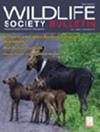利用卷积神经网络对大平原南部高优先级鸟类进行有效的声学分类
IF 1.5
4区 环境科学与生态学
Q3 Environmental Science
引用次数: 0
摘要
被动声学监测是一种有价值的生态和保护工具,它允许研究人员收集来自大地理区域和时间跨度的发声物种的数据。草原鸟类的数量在过去几十年中急剧下降,其中许多是生态系统健康的指标。草地鸟类种群的声学监测为监测下降和集中保护措施提供了机会,但从声学数据中有效准确地识别物种的能力具有挑战性。因此,像卷积神经网络(cnn)这样的自动分类器的发展是简化单个物种的检测和识别的前沿。在这里,我们提出了一种CNN分类器,用于识别大平原南部俄克拉荷马州中南部的5种主要草原鸟类:北山齿鹑(Colinus virginianus),彩绘猎(Passerina ciris), dickcissel (Spiza americana),东部草地鹨(Sturnella magna)和贝尔鸟(vireo bellii)。我们编制了一个高质量的训练数据集,由6,933个呼叫组成,使用模板匹配半自动构建,可以轻松扩展到任何感兴趣的鸟类物种。我们训练的多标签CNN使用测试呼叫库和使用可编程游戏呼叫者播放的现场录音,对5个物种实现了高水平的分类准确率(≥98%)。在大空间范围内进行野生动物声学调查的能力将允许更有效地监测野生动物,以确定关键种群参数和趋势,以及生物和非生物因素(如植被、干扰、天气)对这些关键物种的影响。本文章由计算机程序翻译,如有差异,请以英文原文为准。

An efficient acoustic classifier for high‐priority avian species in the southern Great Plains using convolutional neural networks
Abstract Passive acoustic monitoring is a valuable ecological and conservation tool that allows researchers to collect data from vocal species across large geographic areas and temporal spans. Grassland bird populations, many of which are indicators of ecosystem health, have experienced precipitous declines over the past several decades. Acoustic monitoring of grassland bird populations provides opportunities to monitor declines and focus conservation practices, yet the ability to identify species efficiently and accurately from acoustic data is challenging. Therefore, development of automated classifiers such as convolutional neural networks (CNNs) are at the forefront of streamlining detection and identification of individual species. Here, we present a CNN classifier for 5 key grassland bird species across southcentral Oklahoma, a part of the southern Great Plains: northern bobwhite ( Colinus virginianus ), painted bunting ( Passerina ciris ), dickcissel ( Spiza americana ), eastern meadowlark ( Sturnella magna ), and Bell's vireo ( Vireo bellii ). We compiled a high‐quality training dataset consisting of 6,933 calls, built semiautonomously using template matching that can be expanded easily to any bird species of interest. Our trained multilabel CNN achieved a high level of classification accuracy (≥98%) for the 5 species using the library of test calls and field recordings played using a programmable game caller. The ability to conduct acoustic wildlife surveys across large spatial extents will allow for more efficient monitoring of wildlife to determine key population parameters and trends and effects of biotic and abiotic factors (e.g., vegetation, disturbance, weather) on these key species.
求助全文
通过发布文献求助,成功后即可免费获取论文全文。
去求助
来源期刊

Wildlife Society Bulletin
BIODIVERSITY CONSERVATION-
CiteScore
2.10
自引率
13.30%
发文量
0
期刊介绍:
The Wildlife Society Bulletin is a journal for wildlife practitioners that effectively integrates cutting edge science with management and conservation, and also covers important policy issues, particularly those that focus on the integration of science and policy. Wildlife Society Bulletin includes articles on contemporary wildlife management and conservation, education, administration, law enforcement, and review articles on the philosophy and history of wildlife management and conservation. This includes:
Reports on practices designed to achieve wildlife management or conservation goals.
Presentation of new techniques or evaluation of techniques for studying or managing wildlife.
Retrospective analyses of wildlife management and conservation programs, including the reasons for success or failure.
Analyses or reports of wildlife policies, regulations, education, administration, law enforcement.
Review articles on the philosophy and history of wildlife management and conservation. as well as other pertinent topics that are deemed more appropriate for the Wildlife Society Bulletin than for The Journal of Wildlife Management.
Book reviews that focus on applied research, policy or wildlife management and conservation.
 求助内容:
求助内容: 应助结果提醒方式:
应助结果提醒方式:


